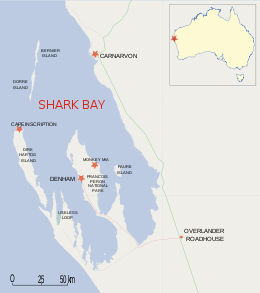
Dirk Hartog was a 17th-century Dutch sailor and explorer. Dirk Hartog's expedition was the second European group to land in Australia and the first to leave behind an artefact to record his visit, the Hartog Plate. His name is sometimes alternatively spelled Dirck Hartog or Dierick Hartochszch. Ernest Giles referred to him as Theodoric Hartog. The Western Australian island Dirk Hartog Island is named after Hartog.

Dirk Hartog Island is an island off the Gascoyne coast of Western Australia, within the Shark Bay World Heritage Area. It is about 80 kilometres long and between 3 and 15 kilometres wide and is Western Australia's largest and most western island. It covers an area of 620 square kilometres and is approximately 850 kilometres north of Perth.
The human history of Western Australia commenced between 40,000 and 60,000 years ago with the arrival of Aboriginal Australians on the northwest coast. The first inhabitants expanded across the east and south of the continent.

Shark Bay is a World Heritage Site in the Gascoyne region of Western Australia. The 23,000-square-kilometre (8,900 sq mi) area is located approximately 800 kilometres (500 mi) north of Perth, on the westernmost point of the Australian continent. UNESCO's official listing of Shark Bay as a World Heritage Site reads:

The banded hare-wallaby, mernine, or munning is a marsupial currently found on the islands of Bernier and Dorre off western Australia. Reintroduced populations have recently been established on islands and fenced mainland sites, including Faure Island and Wadderin Sanctuary near Narembeen in the central wheatbelt.
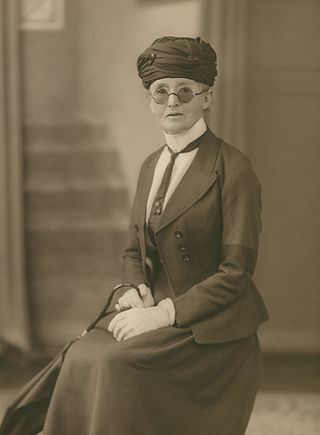
Daisy May Bates, CBE was an Irish-Australian journalist, welfare worker and self-taught anthropologist who conducted fieldwork amongst several Indigenous nations in western and southern Australia. Bates was a lifelong student of Australian Aboriginal culture and society and was the first anthropologist to carry out a detailed study of Australian Aboriginal culture.
The Gascoyne region is one of the nine administrative regions of Western Australia. It is located in the northwest of Western Australia, and consists of the local government areas of Carnarvon, Exmouth, Shark Bay and Upper Gascoyne. The Gascoyne has about 600 km (370 mi) of Indian Ocean coastline; extends inland about 500 km (310 mi); and has an area of 135,073.8 km2 (52,152.3 sq mi), including islands.

Threatened fauna of Australia are those species and subspecies of birds, fish, frogs, insects, mammals, molluscs, crustaceans, and reptiles to be found in Australia that are in danger of becoming extinct. This article lists species classified as threatened species under the Commonwealth Environment Protection and Biodiversity Conservation Act 1999.
The Eendracht was an early 17th century Dutch wooden-hulled 700 tonne East Indiaman, launched in 1615 in the service of the Dutch East India Company (VOC). Its Dutch name means "concord", "unity" or "union", and was a common name given to Dutch ships of the period, from the motto of the Republic: Concordia res parvae crescunt . The ship was captained by Dirk Hartog when he made the second recorded landfall by a European on Australian soil, in 1616.

Hartog Plate or Dirk Hartog's Plate is either of two pewter plates, although primarily the first, which were left on Dirk Hartog Island during a period of European exploration of the western coast of Australia prior to European settlement there. The first plate, left in 1616 by Dutch explorer Dirk Hartog, is the oldest-known artifact of European exploration in Australia still in existence. A replacement, copying the text of the original plus some new text, was left in 1697 – the original dish returned to the Netherlands, where it is on display in the Rijksmuseum. Further additions at the site, in 1801 and 1818, led to the location being named Cape Inscription.
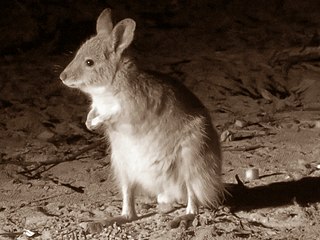
The rufous hare-wallaby, also known as the mala, is a small macropod found in Australia. It was formerly widely distributed across the western half of the continent, but naturally occurring populations are now confined to Bernier Island and Dorre Island Islands off Western Australia.
The Lake Mackay hare-wallaby, also known as the central hare-wallaby or kuluwarri, is an extinct species of macropod formerly found in central Australia. Very little is known about it.
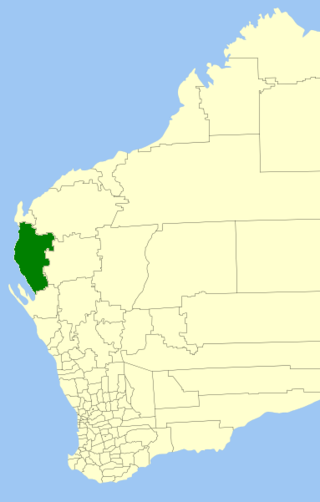
The Shire of Carnarvon is a local government area in the Gascoyne region of Western Australia, located about 900 kilometres (560 mi) north of the state capital, Perth. The Shire covers an area of 46,664 square kilometres (18,017 sq mi), and its seat of government is the town of Carnarvon. The major industries in the area are wool, agriculture and, more recently, tourism.

Yalgoo is an interim Australian bioregion located in Western Australia. It has an area of 5,087,577 hectares. The bioregion, together with the Avon Wheatbelt and Geraldton Sandplains bioregions, is part of the larger Southwest Australia savanna ecoregion as classified by the World Wildlife Fund.

Faure Island is a 58 km2 island pastoral lease and nature reserve, east of the Francois Peron National Park on the Peron Peninsula, in Shark Bay, Western Australia. It lies in line with the Monkey Mia resort to the west, and the Wooramel River on the eastern shore of Shark Bay. It is surrounded by the Shark Bay Marine Park and Shark Bay World Heritage Site and, as the Faure Island Sanctuary, is owned and managed by the Australian Wildlife Conservancy (AWC).
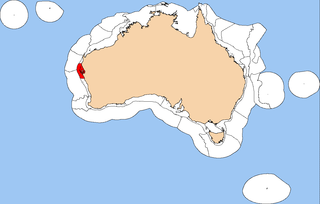
The Central Western Shelf Province, also known as the Shark Bay marine ecoregion, is a biogeographic region of Australia's continental shelf and coastal waters. It includes the subtropical coastal waters of Western Australia.
This is a timeline of Aboriginal history of Western Australia.

Bernier Island is one of three islands that comprise the Bernier and Dorre Island Nature Reserve in the Shark Bay World Heritage area in Western Australia.

Peron Peninsula is a long narrow peninsula located in the Shark Bay World Heritage site in Western Australia, at about 25°51' S longitude and 113°30' E latitude. It is some 130 kilometres (81 mi) long, running north-northwesterly, located east of Henri Freycinet Harbour and west of Havre Hamelin and Faure Island. It is the largest of the Shark Bay peninsulas. Significant settlements include Denham and Monkey Mia. An airport is located there. It is the location of former Pastoral leases Peron and Nanga stations. It is the main location of land access to points within the World Heritage site. The northern area contains the Francois Peron National Park. It is surrounded by the Shark Bay Marine Park and its lower southeast part is adjacent to the Hamelin Pool Marine Nature Reserve.
The Geographe Channel is an arm of the Indian Ocean between Bernier Island and Dorre Island and the mainland of Western Australia. It is the northern part of Shark Bay.
